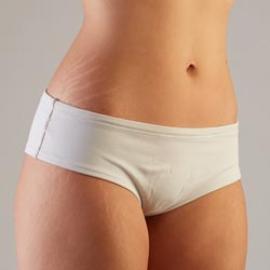
Otoplasty can fix prominent ears as well as every other malformations that may be associated with them. It is intended to provide a definite, symmetrical and natural pinning of the back of the ears.
Indications : Prominent ears
Ear surgery can correct the following:
- Defects in the ear auricle that cause a lack of contour as the ear does not bend to itself enough.
- The enlarged concha that amplifies the distance between the ear and the head.
- The lack of an angle between the ear and the skull, which gives the appearance that it is detached.
Otoplasty is one of the few cosmetic procedures that can be conducted on children as young as seven years of age, but is also very common in adults. It is most commonly performed on both ears at the same time, but can also be performed on only one ear.
Protruding ears
How the procedure works
Otoplasty may be done as an outpatient under local or general anaesthetic for a maximum period of 1 hour and 30 minutes. It can be done on both ears, or even on one ear, in cases of asymmetry.
As there are various techniques, it is important to have a final natural appearance, with the exception of any deformations or folds that we will still be able to see from time to time. It is also important to carry out the operation in order to prevent any recurrence or reconstruction of the original deformation or the incidence of any new deformation.
Anaesthetic
The choice of anaesthetics will be determined after a conversation between the patient, the surgeon and the anaesthesiologist.
- Local anaesthetic: an anaesthetic is injected locally to ensure that the ears are asleep.
- Intravenous sedation anaesthesia: these soothing products allow the patient to feel relaxed during the operation of the ear. It is complemented by a local anaesthetic
- General anaesthetic: the patient will sleep through the whole operation
The operation
The surgeon performs an incision in the natural fold behind the ear.
The skin will then be peeled back to the cartilage. It is then reshaped, either by weakening it with a small curved rasp that takes the shape of the ears (Stenström technique) or by positioning non-absorbable stitches (Mustardé and Furnas technique) or by using a combination of these two techniques.
Depending on the procedure to be done, the surgeon will:
- Reshape the cartilage to reshape the usual contours or eliminate any of the overdeveloped cartilage.
- Carry out the plication of the upper part of the ear (anthelix) and remove the hollow part of the ear (the conch).
- Remove the excess skin strip to prevent forming a ridge. The incision is then sewn with an absorbable suture.
The surgeon puts a dressing on it at the end of the procedure.
Aftercare of the procedure
The operation is usually not painful. The first dressing should be removed after one to two days. The ears are then kept covered by a headband to be worn day and night for one to two weeks. The ears are swollen and sore for two to three weeks.
It is normal for the ears to stay numb for a few weeks, which means that they need to be shielded from cold and heat. It is advised to stop playing sports for a period of one to two months.
Results: Ear reshaping
Otoplasty reshapes the normal folds of the ear, repositions the auricle against the skull and corrects the shape of the ear.

Results before after Otoplasty
The results are apparent the day after surgery, but are final after three to six months. Often a spot of retouching is required in the event of minor imperfections, such as:
- A minor asymmetry which may still be apparent or continue in the positioning of the auricle and in the folds and contours of the cartilage.
- Some stitches may still be visible, and scars that are pink at first may not change color as expected.
However, these slight blemishes are inconspicuous and do not draw attention.
Book your Appointment for an Otoplasty
Consultation for new clients is required.




















































